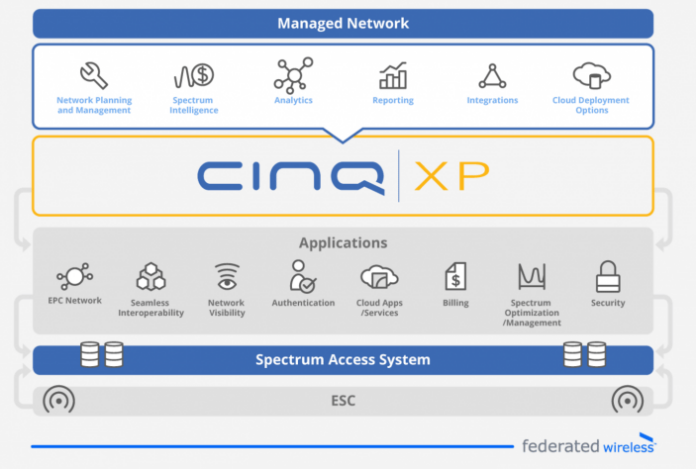DALLAS—Finding a way to strike a balance between low cost, versatile unlicensed spectrum and the quality and predictability of licensed spectrum is a topic of interest at this year’s LTE North America conference, but many are unsure how to make that a reality.
Hank Kafka, VP, Access Architecture and Analytics at AT&T addressed this issue in a panel on spectrum consideration for 5G. “You can’t say spectrum sharing and really mean anything because spectrum sharing is a very very broad concept and it isn’t the case that one solution is spectrum sharing,” he said. “You’ve got to look at specifics of each area, the frequency band, how it’s used, who’s sharing it, what the applications are, propagation techniques, it all has to come into play and that’s kind of why….in some of the areas we’re still in the experimental phase.”
Federated Wireless, a company solely dedicated to make spectrum sharing a reality, believes new CINQ XP platform will help define shared spectrum for Kafka and others and usher in a new revolution in spectrum sharing for application in the Internet of Things and 5G.
“So a lot of the key components that are necessary to make this commercially viable, in addition to the spectrum access solution in our Cinq XP platform are already starting to come together so I believe once that band is proven out, once we prove out the commercial viability of shared spectrum at 3.5 GHz, this model will start to replicate itself in other bands. It’s already been mentioned in the FCC’s new spectrum frontiers, the notice of proposed rule making that came out recently for bands in 24 GHz and above that the spectrum access system and shared spectrum would be one of the ways they’ll look at unlocking…future 5G spectrum,” Federated Wireless CTO, Kurt Schaubach, told RCR Wireless News ahead of his presentation on the “shared spectrum revolution.”
While Schaubach admits there is work to be done, he believes we could see commercial viability for shared spectrum in as little as a few years. He says there could be as much as a gigahertz of shared spectrum available in the next five years.
“Certainly there is a lot of work to be done currently on the 3.5 GHz band to grow the ecosystem and make it a commercial reality and we see that happening within the next couple years and we’re really starting to see the ramp towards commercialization, considerable interest from across the industry with carriers, with non-traditional providers of services, even the over-the-top providers. Also the device and equipment ecosystem is starting to grow,” he explained.
Since its inception, Federated Wireless has been on the forefront of the spectrum sharing conversation, working closely with the FCC and NTIA on policies to bring spectrum sharing to the 3.5 GHz band, as well as other spectrum bands.
Kafka believes spectrum sharing is necessary, but he is concerned about losses in efficiency. “I think sharing going to be around. It’s going to be different for different bands It’s going to have different parameters and different technologies,” he told the audience at LTE North America. “The more different approaches the more complex things are going to get which decreases efficiency and increases the technical challenges.”
He says licensed spectrum is still the most efficient spectrum available. “I think if you have fully licensed spectrum you can get the maximum efficiency out to it because you know exactly where all the cell sites are, what they’re doing, what power levels they have, you can maximize handoff, you can cancel interference,” he said. “You can do a ton of stuff in dedicated licensed spectrum to absolutely maximize spectral efficiency.”
But Schabach says the use of 3.5 GHz band for spectrum sharing is not unprecedented. “The 3.5 GHz band is while it’s used on a shared basis or allocated on a shared basis in the U.S. it’s actually licensed in other regions like in Asian and Europe for exclusive use so the importance there is that there has already been a lot of technology development in the way of standard in 3GPP to create band classes for LTE use, devices and network infrastructure,” he said.
The CINQ XP solution is designed to deal with this issue using analytics to provide “real-time coverage, capacity, and user performance simulations and determine the value of spectrum through valuation tools to help facilitate key business decisions. The company says it will allow carriers to scale their network on demand through access to the platform’s cloud-based EPC network, applications, and services, with interoperability with their core network.”

